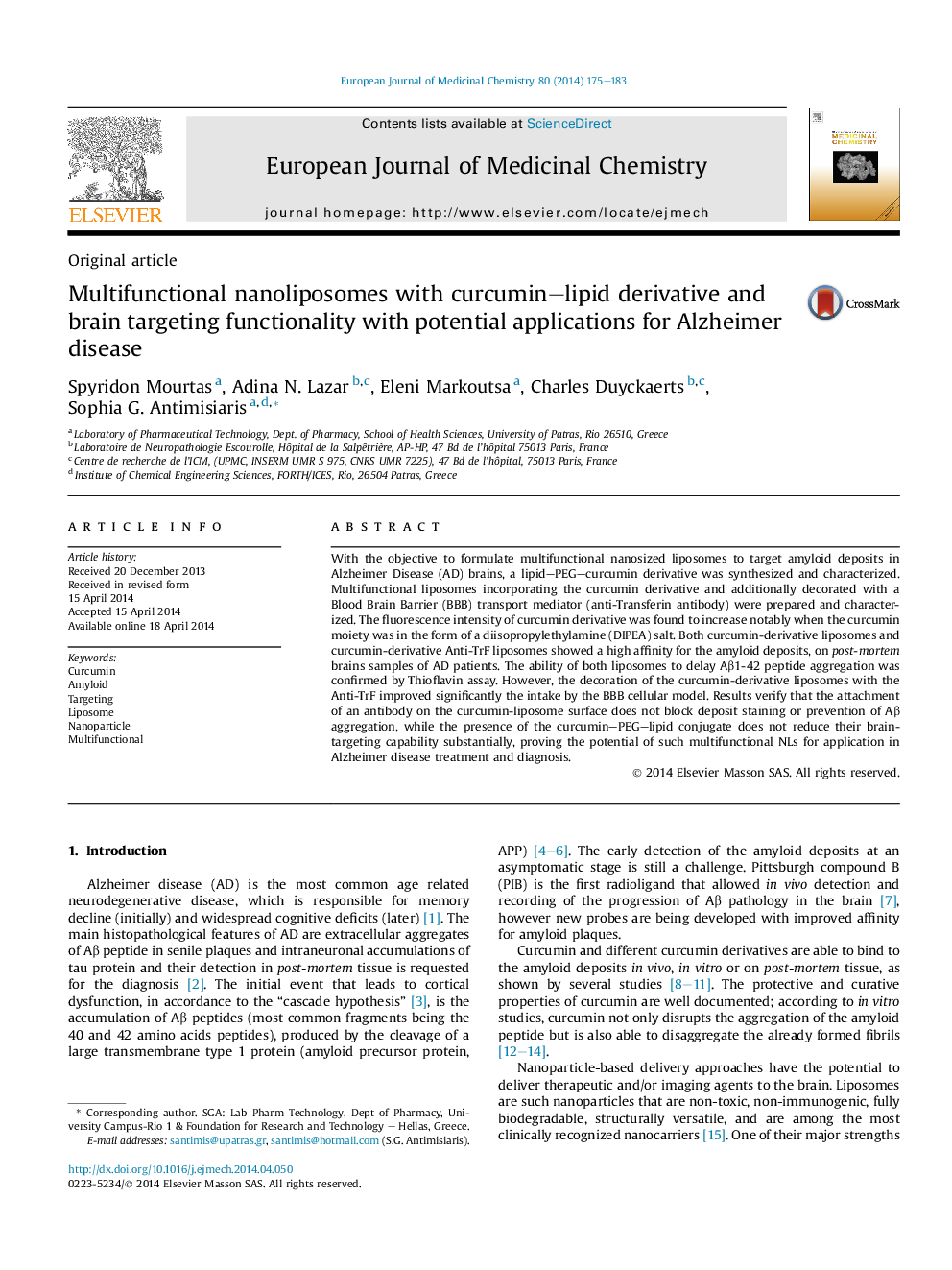| Article ID | Journal | Published Year | Pages | File Type |
|---|---|---|---|---|
| 1394098 | European Journal of Medicinal Chemistry | 2014 | 9 Pages |
•Multifunctional nanoliposomes (NLs) to target both: Amyloid deposits and BBB.•Inhibitory activity on Aβ aggregation and Amyloid plaque staining ability.•Brain targeting potential demonstrated (in vitro).•Conclusion: Developed NLs are potential theragnostic systems for AD.
With the objective to formulate multifunctional nanosized liposomes to target amyloid deposits in Alzheimer Disease (AD) brains, a lipid–PEG–curcumin derivative was synthesized and characterized. Multifunctional liposomes incorporating the curcumin derivative and additionally decorated with a Blood Brain Barrier (BBB) transport mediator (anti-Transferin antibody) were prepared and characterized. The fluorescence intensity of curcumin derivative was found to increase notably when the curcumin moiety was in the form of a diisopropylethylamine (DIPEA) salt. Both curcumin-derivative liposomes and curcumin-derivative Anti-TrF liposomes showed a high affinity for the amyloid deposits, on post-mortem brains samples of AD patients. The ability of both liposomes to delay Aβ1-42 peptide aggregation was confirmed by Thioflavin assay. However, the decoration of the curcumin-derivative liposomes with the Anti-TrF improved significantly the intake by the BBB cellular model. Results verify that the attachment of an antibody on the curcumin-liposome surface does not block deposit staining or prevention of Aβ aggregation, while the presence of the curcumin–PEG–lipid conjugate does not reduce their brain-targeting capability substantially, proving the potential of such multifunctional NLs for application in Alzheimer disease treatment and diagnosis.
Graphical abstractFigure optionsDownload full-size imageDownload as PowerPoint slide
